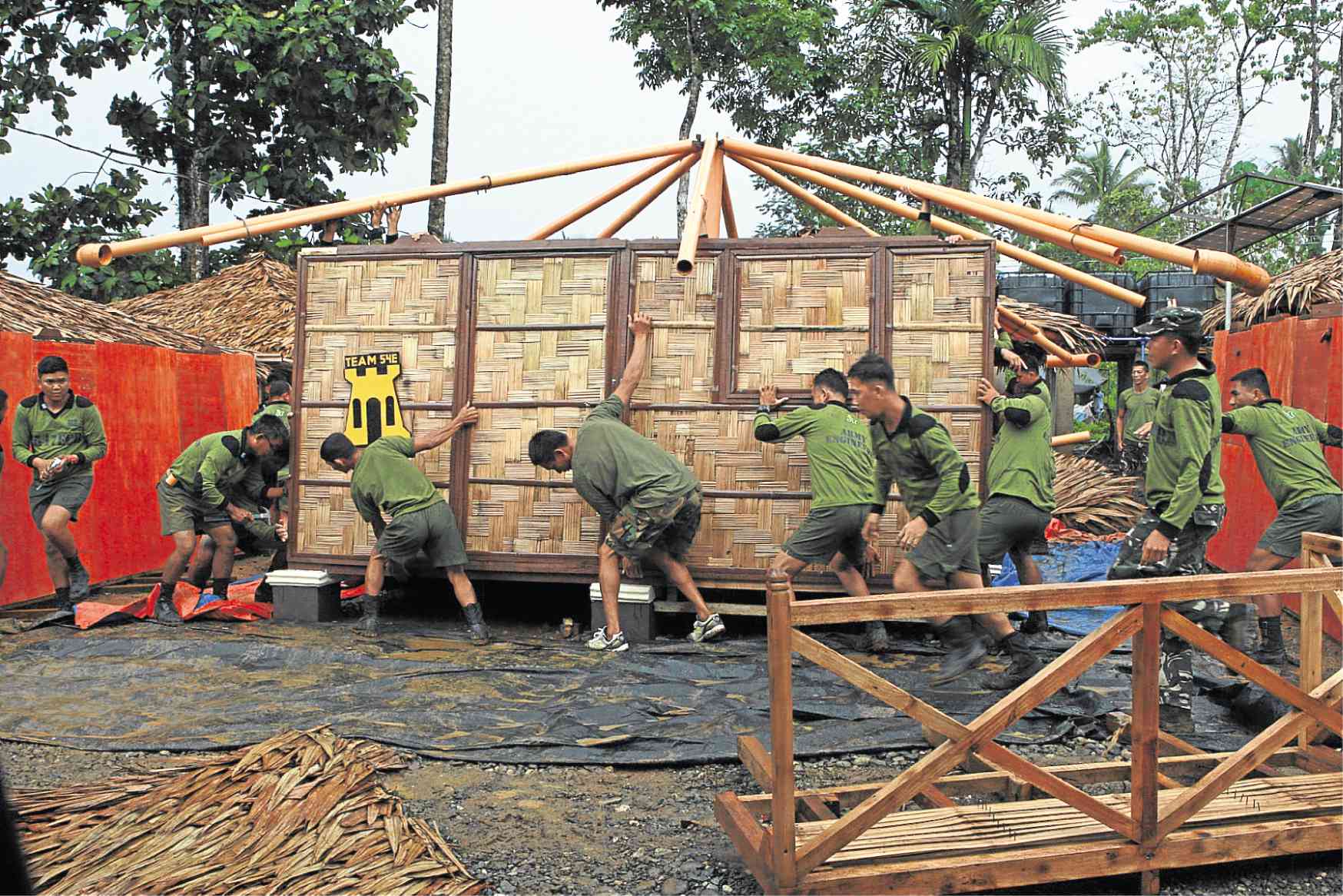In Marawi, temporary homes for evacuees take form of huts

Soldiers assemble a nipa hut inside the “House of Hope” resettlement site for evacuees of the Marawi war.
—JEOFFREY MAITEM
MARAWI CITY — At least 50 huts that took just two weeks to build were neatly arranged in rows on a 1.2-hectare land in a village here, becoming what could be a template for temporary housing for residents displaced by the war on terror in this city.
Realized through a donation made by a group of Filipino-Chinese businessmen, the huts could be the concrete example of what President Duterte had envisioned to be temporary homes for the displaced—not tents.
Mr. Duterte checked the units out, built at the initiative of Chinese Filipino Business Club Inc. (CFBCI), whose leaders proudly presented to the President the product of their donation.
Samuel Uy, CFBCI vice president, said his group had been donating school buildings and it was the first time it ventured into housing for war evacuees.
“Usually, we help our fellow Christians,” Uy said. “But this time, more particularly, it’s our Muslim brothers and sisters.”
The huts, made of bamboo and sawali, were built on land donated by the chair of Bito Buadi Itowa village which became a community of displaced residents given the name Bahay Pagasa, or House of Hope.
CFBCI funded construction of the huts designed by Tarlac Heritage Foundation, a nongovernment organization involved mainly in preservation of heritage structures in the province of Tarlac but which also takes part in charity work.
The huts were meant to house displaced residents while the government rebuilds this predominantly Muslim city.
A total of 50 units of nipa huts each with a floor area of 64 square meters would be powered by solar electricity as CFBCI also had solar panels installed in the site. Potable water would be provided by a tank with a capacity of 5,000 liters.
Communal bathrooms—separate for males and females—were also built.
While beneficiaries were still being processed, some of them would be families of soldiers and militiamen who fought in the Marawi war.
Mr. Duterte, during his visit to the site, witnessed three teams of soldiers compete in being the fastest to assemble the huts.
Col. Romeo Brawner, deputy commander of Joint Task Force Ranao, said the President also talked with some of the projected beneficiaries of the housing units.
At least half of the land would be devoted to vegetable and ornamental gardens that had been cultivated by evacuees even before the huts were ready for occupancy.
Col. Manny Garcia, of the Joint Task Force Marawi, said the gardens, collectively named Hardin ng Lunas, was conceptualized also by Tarlac Heritage Foundation.
Garcia said the evacuees had their first harvest of tomatoes on Monday. —Divina Suson














